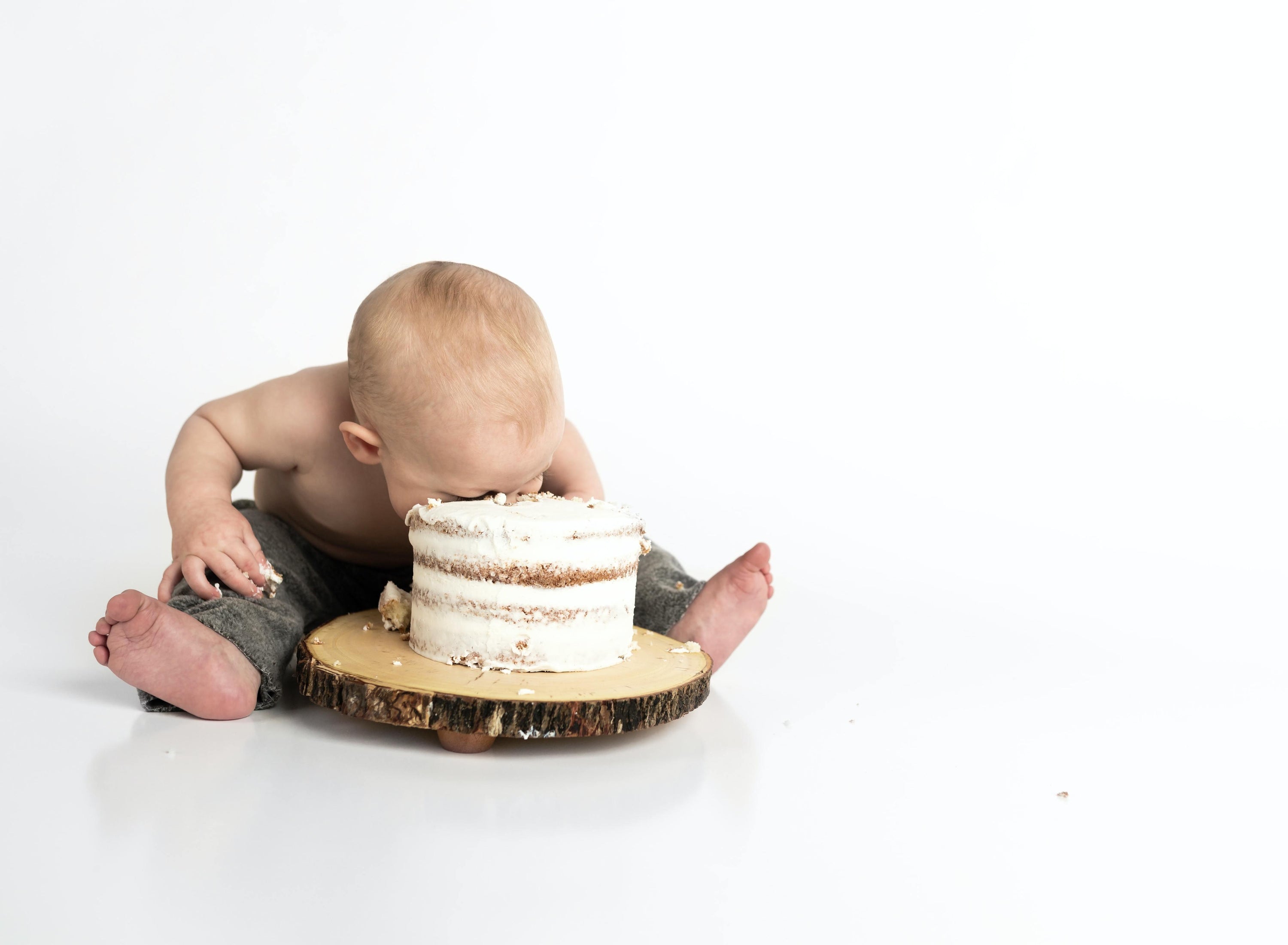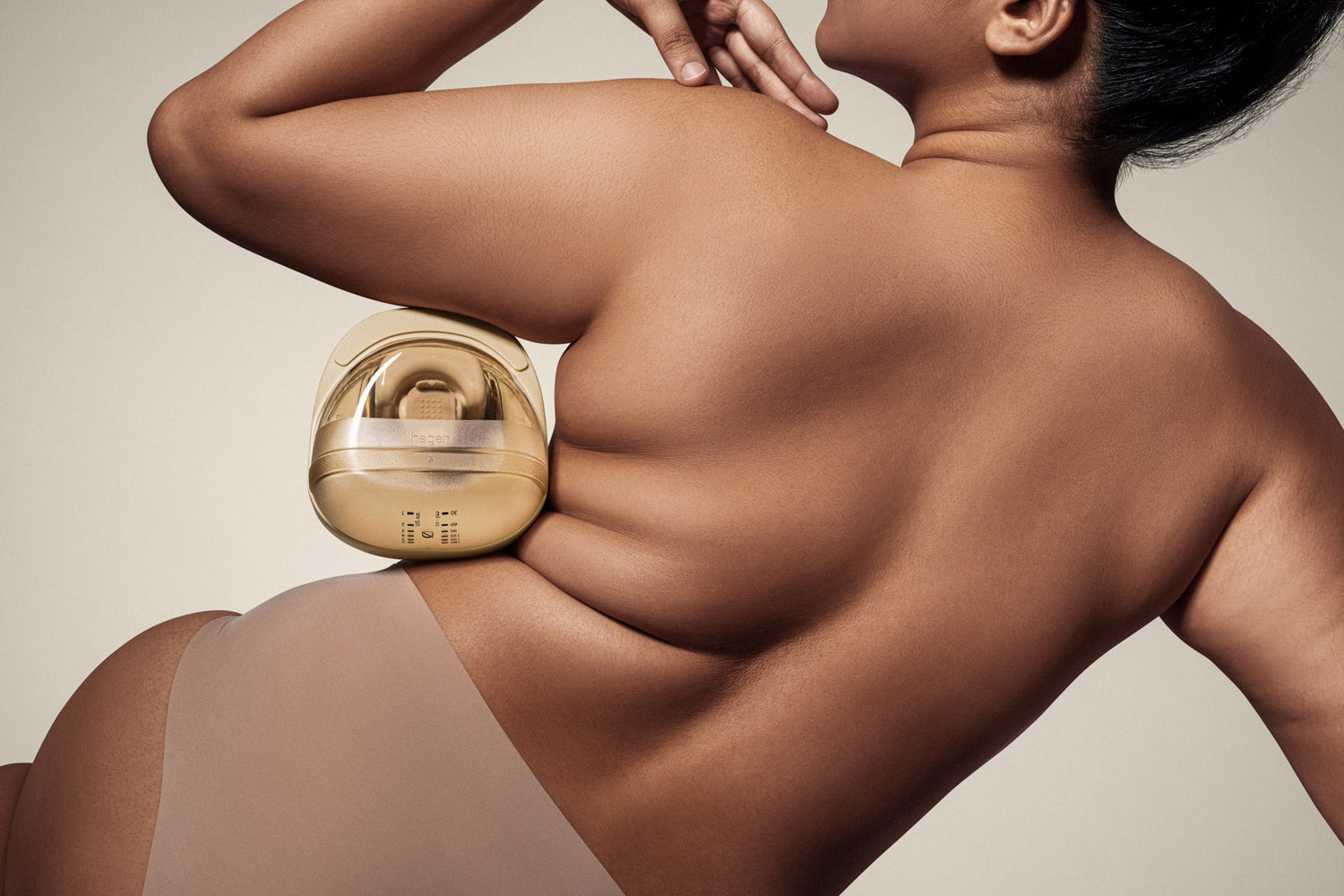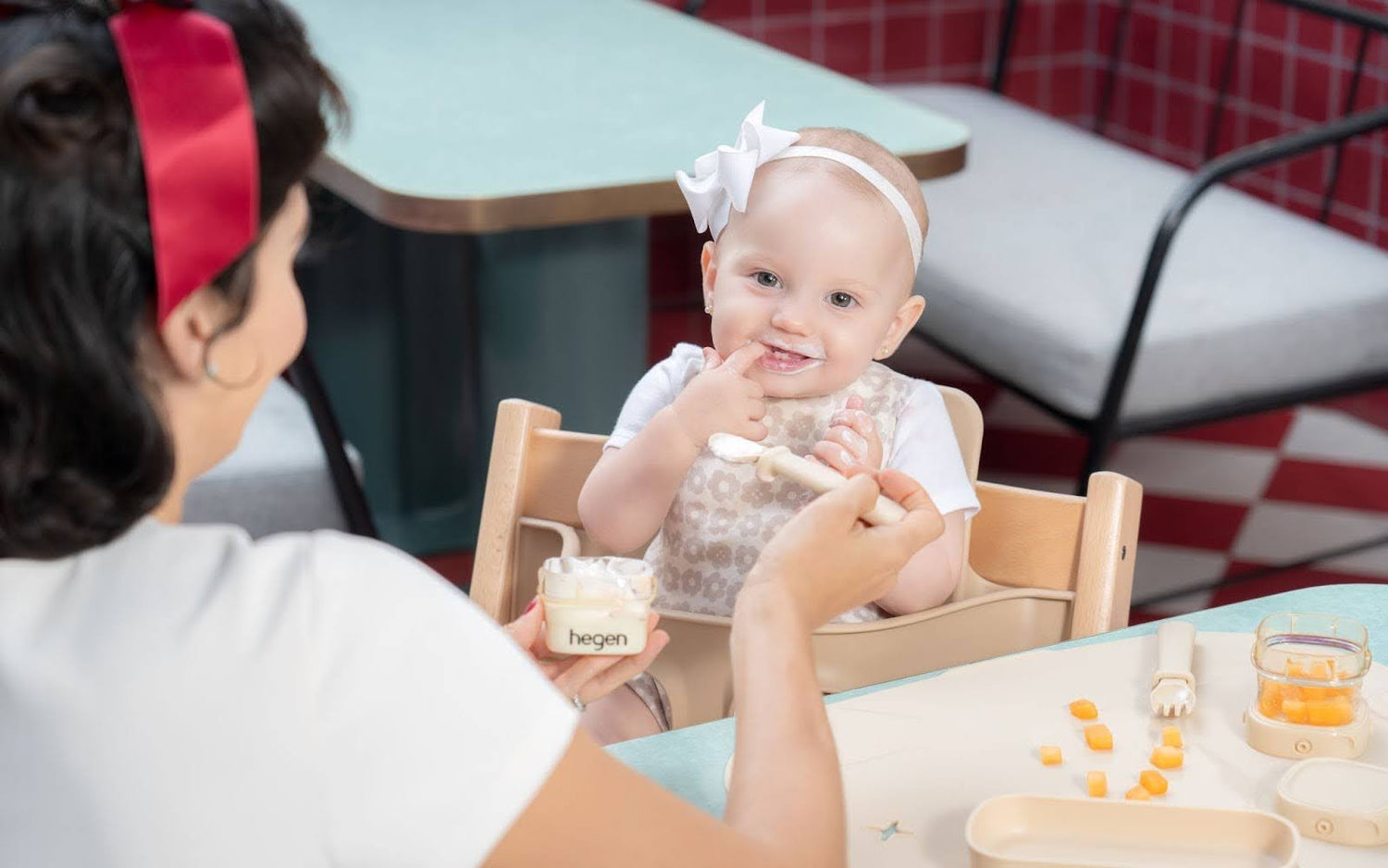If you have friends whose babies are beginning to eat solids, you may have come across some funny photos of tiny tots smearing themselves with food. And not necessarily soft food either, but even large pieces of carrot, a chicken drumstick or even a handful of pasta spirals. More often than not, there will be messes on their fronts, bits of food in their hair and probably a large mess on the table top — and probably surrounding floor too!
These friends of yours are not crazy, nor are they suckers for pain (having to clean up after their kids even more so than usual). They’re simply engaged in a process of introducing their tot to complementary foods via a method called Baby Led Weaning (BLW for short), during which little ones chomp on handheld solids rather than being spoon fed purees.
Of course, as with any introduction of new foods and weaning — especially if your family has a history of being intolerant or allergic to certain types of food, or if baby was born premature — do seek your doctor’s advice before determining the best method for you and your child.
Here are five things you should know about BLW before deciding if you wish to embark on it.
No need for purées
The main goal of BLW as the name implies, is to let baby do what they’re most comfortable with and what they’re ready to do. This means that there is no spoon-feeding (literally and figuratively) needed.
Usually what’s thought of as “baby food” tends to be fruits and vegetables puréed into a mush beyond recognition. Proponents of this method are against this as the point of BLW to serve baby food that is most like how it appears in common dishes. One of the problems with purées is that babies that start out liking certain types of food end up being finicky or fussy eaters as they grow older because they have to transition to foods that are not purées. So, a baby who used to be perfectly okay eating broccoli purée rejects the actual veggie because it actually comes in florets and when cooked in a different way.
In a way, this method also saves you time and offers an opportunity to adhere to a healthier diet, as BLW expects baby to eat the same food as everyone else. And because you want healthy, unprocessed and unsalted food for baby, that will be what you have too!
When planning meals, stick to food that can safely be eaten raw and doesn’t require too much additives. Use homemade stocks and sauces to add flavour rather than oils and salts. Go ahead and serve pasta, rice, steamed veggies and deboned fish or even a chicken drumstick and let baby attack it (under your watchful eye of course).
Yes, there will be a mess!
It’s impossible to keep clean if you intend to adopt BLW as a practice. Baby’s psychomotor skills are still developing at six months, thus impossible to aim food at the mouth with 100% accuracy. So, prepare yourself for extra laundry and mopping of floors.
The great thing about BLW is that it also doubles up mealtimes as playtime or motor development time. Baby will surely find it enticing to be allowed to touch, squeeze, gnaw and suck.
When dining out, remember to pack extra large bibs and a placemat if you want to try to minimise the mess for the restaurant!
Go big or go home
While it may seem counterintuitive to give baby large portions of food, a bigger piece is actually better than a bite-size one that they might choke on. So, let them gnaw on a whole apple (lightly stewed so that it’s not so hard) or a large piece of carrot (not cut in coins or small sticks) that takes them both hands to hold; it’s impossible for them to swallow the whole thing into their tiny mouths anyway. Don’t give small foods like grapes, nuts and berries or anything that is too hard or comes with seeds or pits.
At this point in time, they may have few teeth or none at all; licking and gnawing is great for their dental development. The babies on BLW are not actually eating solids the way we do; they are tasting, sucking and licking more than actually chewing and swallowing. Pick foods that are relatively solid, not mushy (like a banana) so that they can’t bite off more than they can chew – pun intended.
Stick to it
It may be tempting to try having the best of both worlds and do both BLW and spoon-feeding purées to baby. But it is actually quite counterproductive and may confuse baby.
If you’ve decided to try BLW, do stick to it for a certain duration rather than switching between one to another and back again. Instead of purées, consider naturally soft foods like tofu or cooked egg (when baby is old enough to have it). When dining outside, either pack BLW-friendly foods or order something suitable off the adult menu, like steamed veggies. Remember to ask for a low sodium option.
Milk is still important
Many parents who first embark on BLW are concerned that their babies are not eating very much as most of the food ends up on the floor and on their person, rather than in their mouths.
Babies performing BLW in the first stages are not actually eating full meals but actively learning all about solids in terms of taste, smell and touch. In fact, in their first year, babies should be getting their main source of nutrition from breastmilk rather than solids. So, if you’re breast- or bottle-feeding express breastmilk, remember to keep that going. Be strict about mealtimes but there’s no need to insist that they finish everything on their plate.
It may seem like a waste of food, but to have a child who grows up not being a picky eater and open to tasting all kinds of different food is surely a payoff many parents would want!
PHOTO: Unsplash/Henley Design Studio





